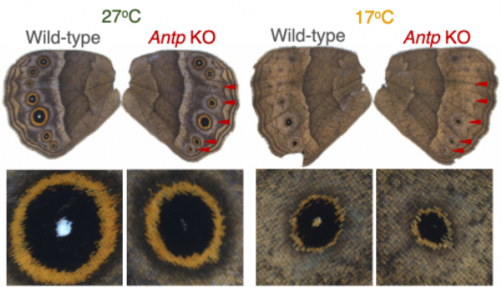Researchers from the National University of Singapore (NUS) have made a groundbreaking discovery about the wing patterns of tropical butterflies, revealing a simple DNA “switch” that allows them to adjust the size of their wing eyespots in response to seasonal temperature changes. This critical finding sheds light on the evolution of environmental sensitivity in insects and could have implications for understanding adaptation in a rapidly changing climate.
Insects are known for their remarkable adaptability to their surroundings, with some species even changing their colors with the seasons. This phenomenon, known as seasonal plasticity, plays a crucial role in their survival; however, the evolutionary origins of this adaptability have remained enigmatic until now.
Led by Professor Antónia Monteiro from the NUS Department of Biological Sciences, the research team identified a specific DNA sequence that helps certain butterflies switch their wing patterns between wet and dry seasons. The study, published in the journal Nature Ecology & Evolution on October 24, 2025, focuses on the African butterfly species Bicyclus anynana, which exhibits strikingly different appearances depending on the season.
During the wet season, these butterflies develop larger eyespots on their wings, while in the dry season, their eyespots are significantly smaller. This adaptation enhances their survival in varying environmental conditions. Previous studies indicate that the temperature at which caterpillars are raised influences this size change, especially in satyrid butterflies, a group characterized by predominantly brown wings adorned with distinctive eyespots.
The latest research pinpointed a master instruction gene, Antennapedia (Antp), which is crucial for the development of eyespots in satyrid butterflies. The team found that the activity of this gene fluctuates depending on the temperatures experienced during the butterflies’ growth. When the gene’s activity was disrupted in two different satyrid species, there was a marked reduction in eyespot size, particularly in warmer conditions, confirming Antp’s essential role in the seasonal size change.

In B. anynana, when the gene Antp is knocked out (KO), eyespots become smaller, but the effect is stronger under higher temperature conditions. © Tian Shen
Additionally, the researchers discovered a novel DNA switch, called a “promoter,” unique to satyrid butterflies. This switch activates the Antp gene specifically in cells that develop eyespots. When the switch was disabled, the butterflies’ ability to adjust their eyespot size in response to temperature was diminished, indicating that this genetic element is pivotal to the evolution of their seasonal adaptability.
Dr. Tian Shen, the paper’s first author, who conducted this research during his time as a graduate student and postdoctoral fellow at NUS, commented, “It is striking that a simple genetic switch can underlie complex environmental sensitivity across a broad group of insects. These findings open the door to future research into the roles such switches play in shaping adaptations and provide insights that could inform conservation efforts in a changing climate.”
This discovery not only enhances our understanding of butterfly adaptation but may also help shape conservation strategies in the face of global change. As climate conditions continue to shift, understanding the genetics behind these adaptations will be vital for protecting vulnerable species.






